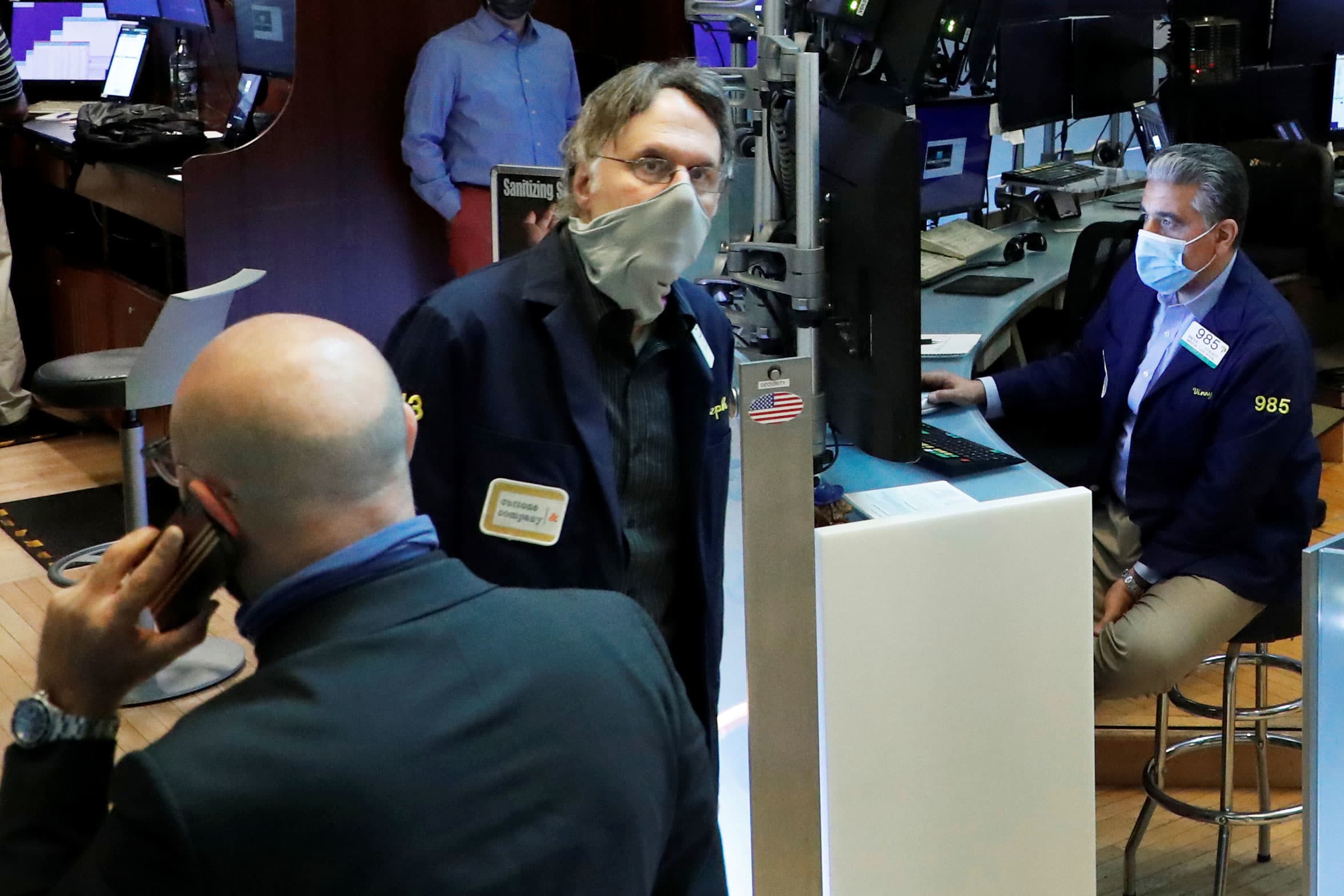
Traders wear masks as they work on the floor of the New York Stock Exchange as the outbreak of the coronavirus disease (COVID-19) continues New York, May 27, 2020.
Lucas Jackson | Reuters
Tuesday’s sell-off after a three-day bounce signals continued stock market volatility, and the possibility that the correction is not yet over.
The S&P 500 was up, down, sideways and down again Tuesday, finishing the day at 3,335. It had declined amid new concerns about the coronavirus spreading in New York and then ended the day a half percent lower ahead of Tuesday evening’s potentially pivotal presidential debate.
“Whenever there’s a close election, the market tends to go flat or down in the run up, and on a quick and clear resolution, the market tends to rally hard,” said Binky Chadha, Deutsche Bank chief global strategist.
Democrat Joe Biden is leading President Donald Trump in the polls but his lead has fallen from 10 percentage points earlier in the summer to 6.1 points Tuesday, according to RealClearPolitics average of polls. Biden’s average lead had been 6.9 percentage points Monday. Strategists say the debate could be a draw, but if one candidate looks stronger, it could move the market and it could also move the polls.
“If the polls continue to tighten as they have been for the last three months now, you should expect people to buy more protection. You should expect the market to sell off,” said Chadha.
Sam Stovall, chief investment strategist at CFRA, said the market was lifted early in the day by a flood of retail orders. “Once those retail orders had been executed, I think the market essentially kissed the 50-day moving average and [was] being repelled from it,” he said.
“I’m of the mindset we touch the 200-day moving average before this correction runs its its course,” he said. The 200-day moving average is at 3,109, and it is the average of the last 200 closing levels. It is a widely watched momentum indicator and is often a support level when the market is moving lower.
Stovall said he thinks the market is concerned about the virus first and then the election and stimulus. In the short term, the debate could impact stocks.
“If we end up seeing a series of gaffes from Biden, I think that lessens the possibility of a triple play by the Democrats, ” said Stovall. He said the market would not necessarily take a Biden presidency as negative without a Democratic sweep since it would be more difficult to enact legislation to raise corporate and capital gains taxes.
“I think if Biden has a very big win, I think that puts more pressure on the market,” he said. Stovall said he expects the market will continue to sell-off. “October tends to be a capitulation month, it has the higher concentration of conclusions to pull backs., corrections and bear markets since World War II.”
The debate could also influence trading into the election.
“This is going to be extremely important. This could shape the next few weeks. What the market does not want is a Democratic sweep,” said Quincy Krosby, chief market strategist at Prudential Financial. “Biden in the White House without a Democratic senate is much more palatable to the market.”
Analysts said it will be important if Biden signals when he would push tax hikes. Some analysts say Biden may hold off on tax cuts to make sure the economy heals first. “It would be from the Obama playbook. Programs are delivered to help the economy and clearly help us get through the pandemic, to the other side before tightening the economy,” Krosby said.
Robert Sluymer, technical analyst with Fundstrat, agrees the 200-day moving average could be the floor for the sell-off, which so far troughed with a 10% decline in the S&P.
“I think we will still chop around. A lot of people are looking for that low at or after the election. I think there’s the potential of it to come earlier, possibly as early as option expiration in October,” he said. That would be between Oct. 16 and Oct. 20.
He said the recent bounce may have been related to month-end portfolio rebalancing or short-covering.
“As we get into the end of the month, I think we’re going to try it on the downside again,” Sluymer said.




